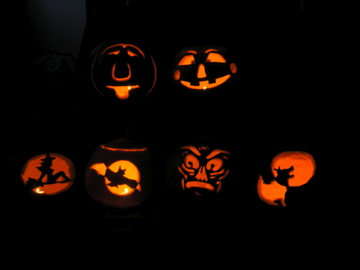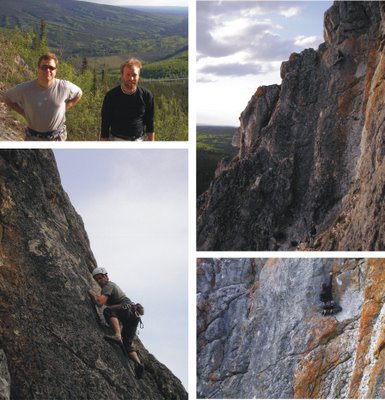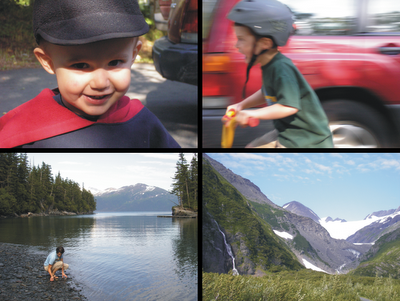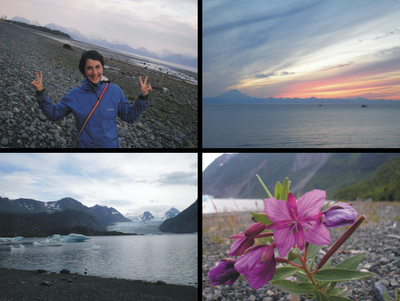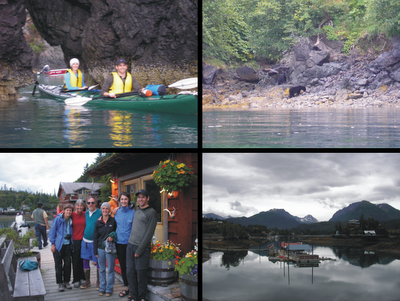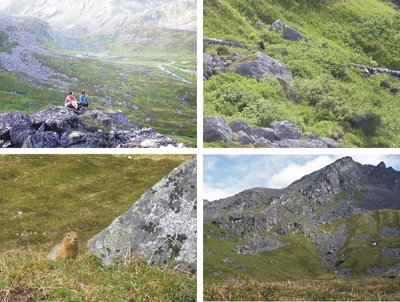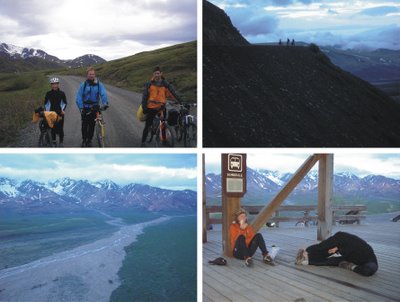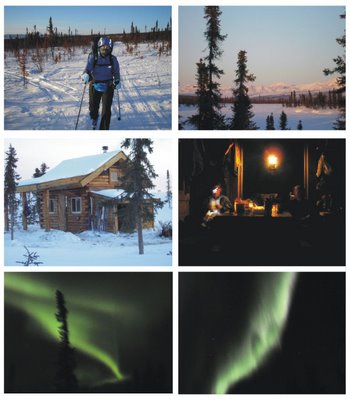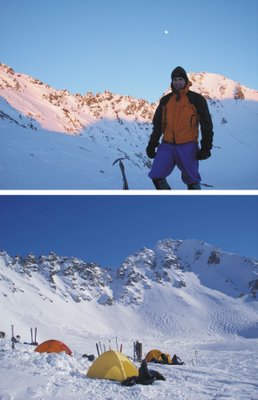Driving has been a bit treacherous, with loose powder on ice, but hopefully the worst has passed. In the winter its so cold and dry that the friction is quite good on the dry snow. At least when they spray gravel and salt around the place. The 15 minute zip to work has been taking 25, and we've passed several cars and pick ups that had sliden off the road. So far so good, but the car is now again stocked with windchild scraper, extension cord for plugging in the engine heaters, tow rope, gravel, sleeping bag and blanket and a bag of spare warm clothes. Fingers crossed there will be no need for that!
 One great thing about the snow is that it makes the tracks of all the animals visible. We've had a little moose in the lower drive way after apparently having crossed right around our front deck. A hare has been out there too; they're nice and white now. Some of the mystery the other tracks was resolved a couple of nights ago. I heard rummaging in the pantry at 1am and expected that a squirrel had gotten in through the boarding somewhere. Steeled for whatever it was, I flung upon then door and was greeted by an ermine, standing up next to the rubbish, and looking back at me with his head cocked. So cute! Lisa was less enamored with him, especially after he ran back up inside the wall and poked and then up behind the head board of the bed in the loft! He's since nibbled the peanut butter off a mouse trap. Our landlord Holland has said you need bloody meat in a trap - he'll hook us up on Saturday he says. Kind of sad to go after them, they're cute and just looking for some place warm, but they eat the insulation too. (And apparently they make for quite nice little purses or key chain accessories.) He was standing up just like this little guy on the left.
One great thing about the snow is that it makes the tracks of all the animals visible. We've had a little moose in the lower drive way after apparently having crossed right around our front deck. A hare has been out there too; they're nice and white now. Some of the mystery the other tracks was resolved a couple of nights ago. I heard rummaging in the pantry at 1am and expected that a squirrel had gotten in through the boarding somewhere. Steeled for whatever it was, I flung upon then door and was greeted by an ermine, standing up next to the rubbish, and looking back at me with his head cocked. So cute! Lisa was less enamored with him, especially after he ran back up inside the wall and poked and then up behind the head board of the bed in the loft! He's since nibbled the peanut butter off a mouse trap. Our landlord Holland has said you need bloody meat in a trap - he'll hook us up on Saturday he says. Kind of sad to go after them, they're cute and just looking for some place warm, but they eat the insulation too. (And apparently they make for quite nice little purses or key chain accessories.) He was standing up just like this little guy on the left.Last Sunday's plans were to go ice climbing, but the wrong weather mix in recent weeks meant no ice was 'in'. Instead, we went to a 'harvest meal' at the house of our friends Pat and Adia. The harvested contributions included cranberries and blueberries (disguised in various cakes), halibut nuggets, moose meatballs and moose liver pate! We then all set about carving up our pumpkins in preparation for Halloween. Our one is the silhouetted bat. Spooky, huh - woooo..
Well, that's about it for now. We've both been pretty busy with work and classes etc. It would be nice to get outside more during the week, but hopefully a little more snow will see us on the trails at lunch time and after work. Ciao.

